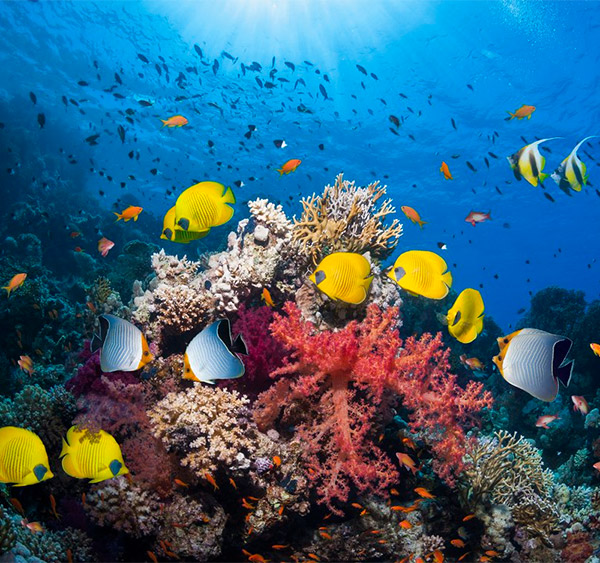Protecting Hawaii’s Coral Reefs
 Our program has been dedicated to safeguarding and replenishing the coral reefs that will shape the future of Hawaii’s marine ecosystems.
Our program has been dedicated to safeguarding and replenishing the coral reefs that will shape the future of Hawaii’s marine ecosystems.
Our primary focus is to stop land-based pollution from reaching the ocean, particularly on Oahu and Hawaii’s islands. We will work alongside the state to advance more effective wastewater treatment systems. Clean water is essential for coral reef health, and pollution not only endangers our current reefs but also hinders their ability to adapt to the challenges posed by climate change.
A Unique Treasure
 Hawaii plays a vital role in global coral reef conservation. The islands boast one of the highest concentrations of endemic marine species found anywhere on Earth, and they are home to 85% of the United States’ coral reefs.
Hawaii plays a vital role in global coral reef conservation. The islands boast one of the highest concentrations of endemic marine species found anywhere on Earth, and they are home to 85% of the United States’ coral reefs.
These reefs are deeply embedded in local culture, underpinning traditions, foods, sacred ceremonies, and recreational activities. Hawaii’s coral reefs contribute more than $800 million annually to the economy through tourism and act as a natural barrier, protecting both people and coastal property from storm surges and flooding. The U.S. Geological Survey estimates that the value of shoreline protection provided by coral reefs in Hawaii is worth over $800 million each year.
An Ecosystem at Risk
Hawaii’s reefs face both global and local threats, including climate change, overfishing, and pollution from sediment and nutrients, primarily from sewage and stormwater runoff.
Across the Hawaiian Islands, over 80,000 cesspools release an estimated 50+ million gallons of raw sewage into Hawaii’s waterways daily. This pollution raises nutrient, bacterial, and pathogen levels in nearshore waters, creating significant health risks for both people and reefs. On Hawaii Island, sewage pollution is recognized as the leading cause of declining fish populations and has been directly linked to coral disease, bleaching, and human health concerns.
In areas like West Maui, the land that once supported pineapple and sugar cane plantations is now degraded, with hard-packed soil. When it rains, flash floods wash large amounts of sediment and stormwater into the ocean, impacting coral reefs that once thrived offshore. West Maui has been identified as a priority conservation area by both state and federal governments, aiming to address land-based pollution and halt the decline in coral cover. Due to the region’s unique ocean currents, these corals are vital sources of larvae for reefs on nearby islands.
Toxic Materials
Toxic wastes are poisonous substances deposited into water bodies. They include compounds such as tributyl tin from boat paints, industrial, household cleaning, agricultural (fertilizers and pesticides), and other chemicals from factories. They dissolve in water, effortlessly move through the food chain and find themselves in seafood. Most of the toxic wastes are metal components. According to Lutgens, Tarbuk, and Tasa, the salinity in a water body can never be constant. This is because plants and other water animals use the dissolved mineral elements in strengthening their tissues (2010).
This implies that these organisms can also take up soluble toxic compounds and accumulate them in their tissues. Lead is a common and extremely harmful toxic compound that harms the kidneys, brain and reproductive systems of humans. Lead decelerates growth, causes birth defects, is carcinogenic, and impairs hearing. Lead batteries, paints, fishing lures, ceramics, water pipes, and bullet parts emit lead into the water. Fertilizers increase the number of algae plantations in water bodies (eutrophication), which exhaust the dissolved oxygen and throttle other marine organisms (Lenzi, 2008).



